-
 Bitcoin
Bitcoin $118900
0.42% -
 Ethereum
Ethereum $3710
-2.88% -
 XRP
XRP $3.513
-2.96% -
 Tether USDt
Tether USDt $1.000
-0.01% -
 Solana
Solana $203.0
3.65% -
 BNB
BNB $765.5
-1.29% -
 USDC
USDC $0.9998
0.00% -
 Dogecoin
Dogecoin $0.2671
-4.18% -
 Cardano
Cardano $0.8817
-3.63% -
 TRON
TRON $0.3139
-0.64% -
 Hyperliquid
Hyperliquid $44.34
-5.45% -
 Stellar
Stellar $0.4637
-4.08% -
 Sui
Sui $3.908
-2.59% -
 Chainlink
Chainlink $19.34
-2.62% -
 Hedera
Hedera $0.2712
-3.77% -
 Avalanche
Avalanche $24.97
-4.13% -
 Bitcoin Cash
Bitcoin Cash $519.8
-1.48% -
 Shiba Inu
Shiba Inu $0.00001518
-3.74% -
 Litecoin
Litecoin $115.6
-2.21% -
 Toncoin
Toncoin $3.460
3.68% -
 UNUS SED LEO
UNUS SED LEO $8.977
-0.07% -
 Polkadot
Polkadot $4.460
-2.96% -
 Uniswap
Uniswap $10.53
-5.43% -
 Ethena USDe
Ethena USDe $1.001
0.01% -
 Monero
Monero $323.6
-0.36% -
 Pepe
Pepe $0.00001379
-2.60% -
 Bitget Token
Bitget Token $4.772
-3.90% -
 Dai
Dai $0.9999
0.00% -
 Aave
Aave $307.5
-6.66% -
 Bittensor
Bittensor $441.8
0.84%
Should I add positions when the KDJ three lines diverge?
The KDJ indicator's divergence signals potential trend reversals, but adding positions should be confirmed with other indicators and market context to avoid false signals.
May 29, 2025 at 06:56 am
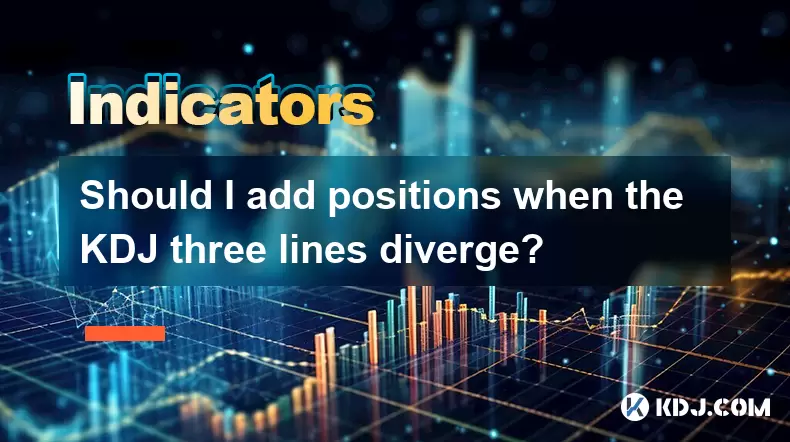
The KDJ indicator is a popular tool among cryptocurrency traders, used to assess overbought or oversold conditions and potential trend reversals. One of the critical signals that traders look for is the divergence of the three lines within the KDJ indicator: the K line, the D line, and the J line. Divergence refers to a situation where these lines move away from each other, suggesting a potential change in market momentum. The question of whether to add positions when the KDJ three lines diverge is complex and depends on various factors, including the specific market conditions, your trading strategy, and risk tolerance.
Understanding the KDJ Indicator
The KDJ indicator is derived from the Stochastic Oscillator but includes a third line, the J line, which can provide additional insights. The K line represents the fastest moving line, followed by the D line, which is a moving average of the K line. The J line is calculated as 3K - 2D, making it more sensitive to price changes. The KDJ indicator oscillates between 0 and 100, with readings above 80 indicating overbought conditions and readings below 20 indicating oversold conditions.
Types of Divergence in KDJ
There are two main types of divergence that traders need to be aware of: bullish divergence and bearish divergence. Bullish divergence occurs when the price of a cryptocurrency makes a lower low, but the KDJ indicator makes a higher low. This suggests that the downward momentum is weakening, and a potential reversal to the upside might be imminent. Conversely, bearish divergence occurs when the price makes a higher high, but the KDJ indicator makes a lower high, indicating that the upward momentum is waning, and a potential reversal to the downside might be on the horizon.
Adding Positions Based on KDJ Divergence
When considering whether to add positions based on KDJ divergence, it is crucial to look at the broader market context. For instance, if you observe a bullish divergence in a market that has been in a prolonged downtrend, it might be a signal to add long positions. However, it is essential to confirm this signal with other technical indicators or fundamental analysis to reduce the risk of false signals.
Similarly, if you notice a bearish divergence in a market that has been rallying, it might be an opportunity to add short positions. Again, it is vital to use additional tools to confirm the signal, such as trend lines, moving averages, or volume analysis, to ensure that the divergence is not a false signal.
Practical Steps for Adding Positions
If you decide to add positions based on KDJ divergence, here are some practical steps to follow:
- Identify the Divergence: Look for a clear divergence between the price action and the KDJ lines. Ensure that the divergence is significant and not just a minor fluctuation.
- Confirm with Other Indicators: Use other technical indicators, such as the RSI, MACD, or Bollinger Bands, to confirm the divergence signal. This helps in reducing the likelihood of entering a trade based on a false signal.
- Assess the Market Context: Consider the overall market trend and any significant news or events that might impact the cryptocurrency's price. A divergence signal is more reliable in a trending market than in a choppy, range-bound market.
- Determine Position Size: Based on your risk management strategy, decide on the size of the position you want to add. Ensure that the position size aligns with your overall portfolio risk.
- Set Stop-Loss and Take-Profit Levels: Before entering the trade, set clear stop-loss and take-profit levels to manage your risk effectively. This helps in protecting your capital and locking in profits.
Risks and Considerations
Adding positions based on KDJ divergence is not without risks. False signals are a common issue, where the divergence appears to signal a reversal, but the price continues in its original direction. To mitigate this risk, it is crucial to use multiple indicators and not rely solely on the KDJ.
Another consideration is market volatility. Cryptocurrencies are known for their high volatility, which can lead to rapid price movements that might invalidate a divergence signal quickly. Therefore, it is essential to be prepared for sudden market shifts and have a solid risk management strategy in place.
Psychological Factors
Trading based on technical indicators like the KDJ can also be influenced by psychological factors. Traders might experience confirmation bias, where they seek out information that confirms their belief in the divergence signal, ignoring contradictory evidence. It is important to maintain an objective approach and be willing to adjust your strategy based on new information.
FAQ
Q: Can KDJ divergence be used as a standalone signal for adding positions?
A: While KDJ divergence can provide valuable insights, it is generally not recommended to use it as a standalone signal. Combining it with other technical indicators and considering the broader market context can help in making more informed trading decisions.
Q: How often should I check the KDJ indicator for divergence?
A: The frequency of checking the KDJ indicator depends on your trading style. For day traders, checking the indicator multiple times throughout the day might be necessary, while swing traders might check it less frequently, perhaps once or twice a day.
Q: What time frame is best for identifying KDJ divergence?
A: The best time frame for identifying KDJ divergence depends on your trading strategy. Shorter time frames, such as 15-minute or hourly charts, are suitable for day traders, while longer time frames, such as daily or weekly charts, are more appropriate for swing or position traders.
Q: How can I differentiate between a genuine KDJ divergence and a false signal?
A: Differentiating between genuine and false KDJ divergence signals can be challenging. One way to do this is by confirming the divergence with other indicators, such as the RSI or MACD. Additionally, paying attention to the strength of the divergence and the overall market trend can help in distinguishing between genuine and false signals.
Disclaimer:info@kdj.com
The information provided is not trading advice. kdj.com does not assume any responsibility for any investments made based on the information provided in this article. Cryptocurrencies are highly volatile and it is highly recommended that you invest with caution after thorough research!
If you believe that the content used on this website infringes your copyright, please contact us immediately (info@kdj.com) and we will delete it promptly.
- SEC, Bitcoin, and Crypto: Navigating the Wild West of Digital Finance
- 2025-07-23 04:30:12
- Solana NFTs Surge: Riding the Wave of Market Volume and NFT Hype
- 2025-07-23 04:30:12
- Wall Street Pepe (WEPE) and the Solana Meme Coin Mania: A New Era?
- 2025-07-23 03:30:13
- Rare Coin Frenzy: Bidding Wars and the Pocket Change Revolution
- 2025-07-23 02:50:13
- Tokens with Growth Potential & Low Risk: Navigating the Crypto Landscape
- 2025-07-23 03:50:12
- Pepe Dollar, Solaxy, and Meme Utility: A New Yorker's Take on Crypto's Cutting Edge
- 2025-07-23 02:50:13
Related knowledge
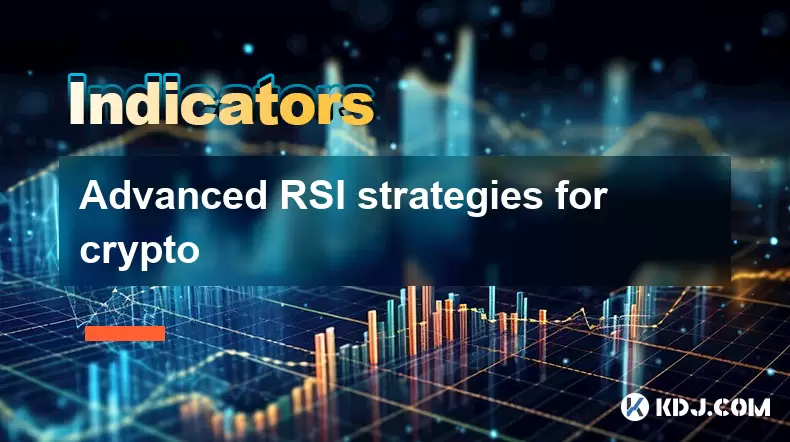
Advanced RSI strategies for crypto
Jul 13,2025 at 11:01am
Understanding the Basics of RSI in Cryptocurrency TradingThe Relative Strength Index (RSI) is a momentum oscillator used to measure the speed and chan...
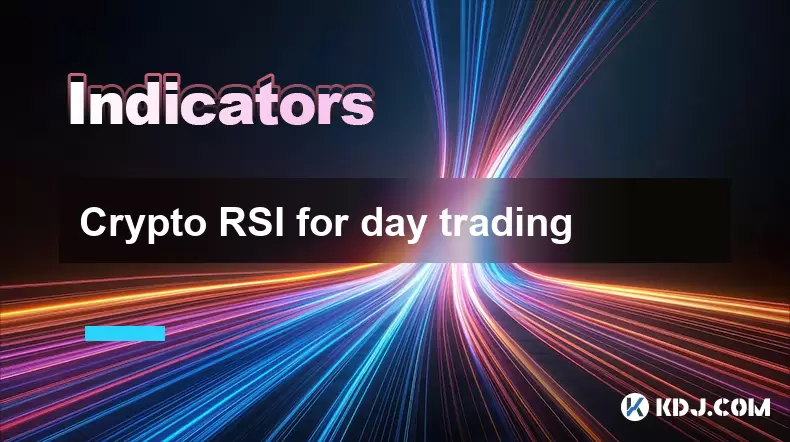
Crypto RSI for day trading
Jul 12,2025 at 11:14am
Understanding RSI in the Context of Cryptocurrency TradingThe Relative Strength Index (RSI) is a momentum oscillator used to measure the speed and cha...
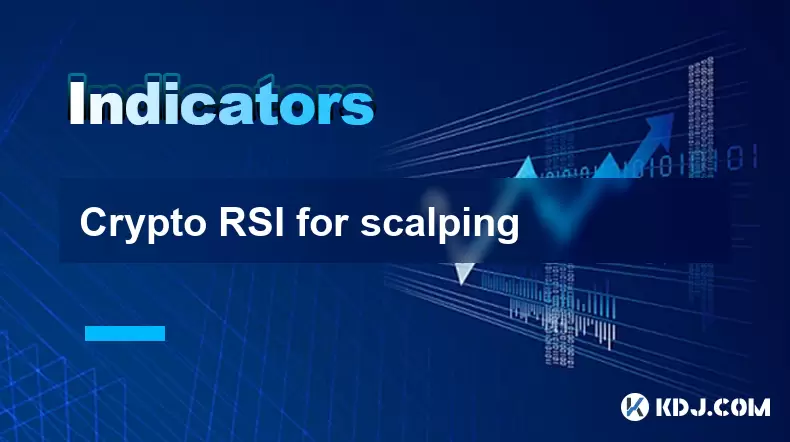
Crypto RSI for scalping
Jul 12,2025 at 11:00pm
Understanding RSI in the Context of Crypto TradingThe Relative Strength Index (RSI) is a momentum oscillator widely used by traders to measure the spe...
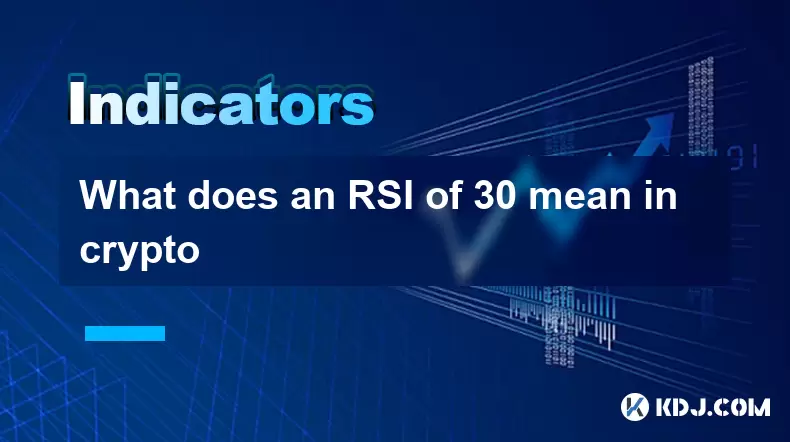
What does an RSI of 30 mean in crypto
Jul 15,2025 at 07:07pm
Understanding RSI in Cryptocurrency TradingRelative Strength Index (RSI) is a momentum oscillator widely used in cryptocurrency trading to measure the...
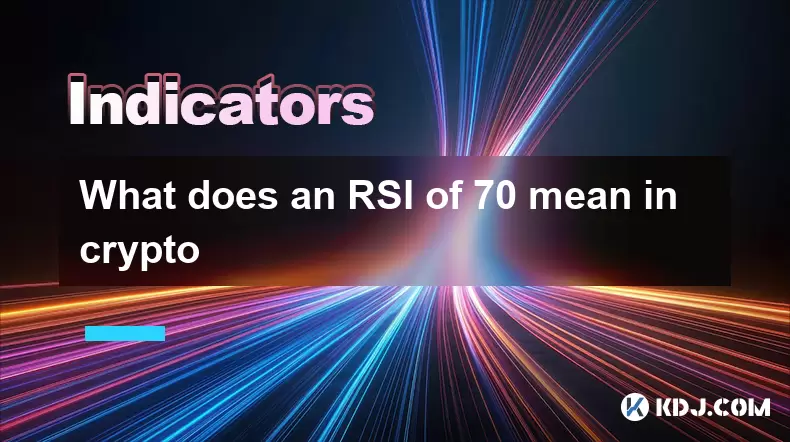
What does an RSI of 70 mean in crypto
Jul 13,2025 at 06:07pm
Understanding the RSI Indicator in Cryptocurrency TradingThe Relative Strength Index (RSI) is a widely used technical analysis tool that helps traders...
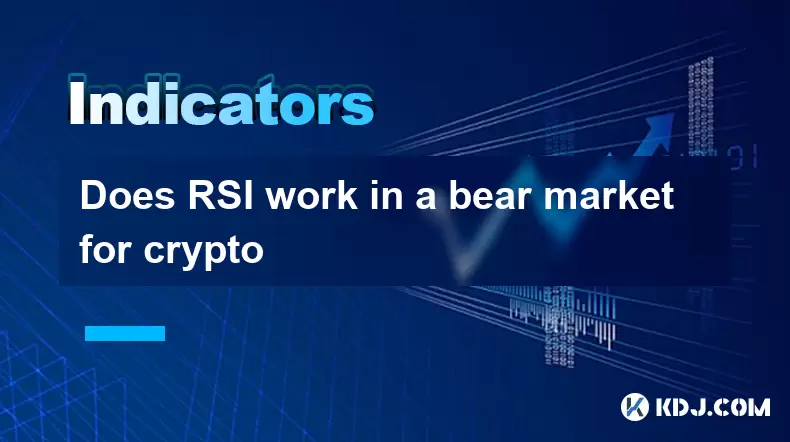
Does RSI work in a bear market for crypto
Jul 16,2025 at 01:36pm
Understanding RSI in Cryptocurrency TradingThe Relative Strength Index (RSI) is a momentum oscillator used by traders to measure the speed and change ...

Advanced RSI strategies for crypto
Jul 13,2025 at 11:01am
Understanding the Basics of RSI in Cryptocurrency TradingThe Relative Strength Index (RSI) is a momentum oscillator used to measure the speed and chan...

Crypto RSI for day trading
Jul 12,2025 at 11:14am
Understanding RSI in the Context of Cryptocurrency TradingThe Relative Strength Index (RSI) is a momentum oscillator used to measure the speed and cha...

Crypto RSI for scalping
Jul 12,2025 at 11:00pm
Understanding RSI in the Context of Crypto TradingThe Relative Strength Index (RSI) is a momentum oscillator widely used by traders to measure the spe...

What does an RSI of 30 mean in crypto
Jul 15,2025 at 07:07pm
Understanding RSI in Cryptocurrency TradingRelative Strength Index (RSI) is a momentum oscillator widely used in cryptocurrency trading to measure the...

What does an RSI of 70 mean in crypto
Jul 13,2025 at 06:07pm
Understanding the RSI Indicator in Cryptocurrency TradingThe Relative Strength Index (RSI) is a widely used technical analysis tool that helps traders...

Does RSI work in a bear market for crypto
Jul 16,2025 at 01:36pm
Understanding RSI in Cryptocurrency TradingThe Relative Strength Index (RSI) is a momentum oscillator used by traders to measure the speed and change ...
See all articles

























































































